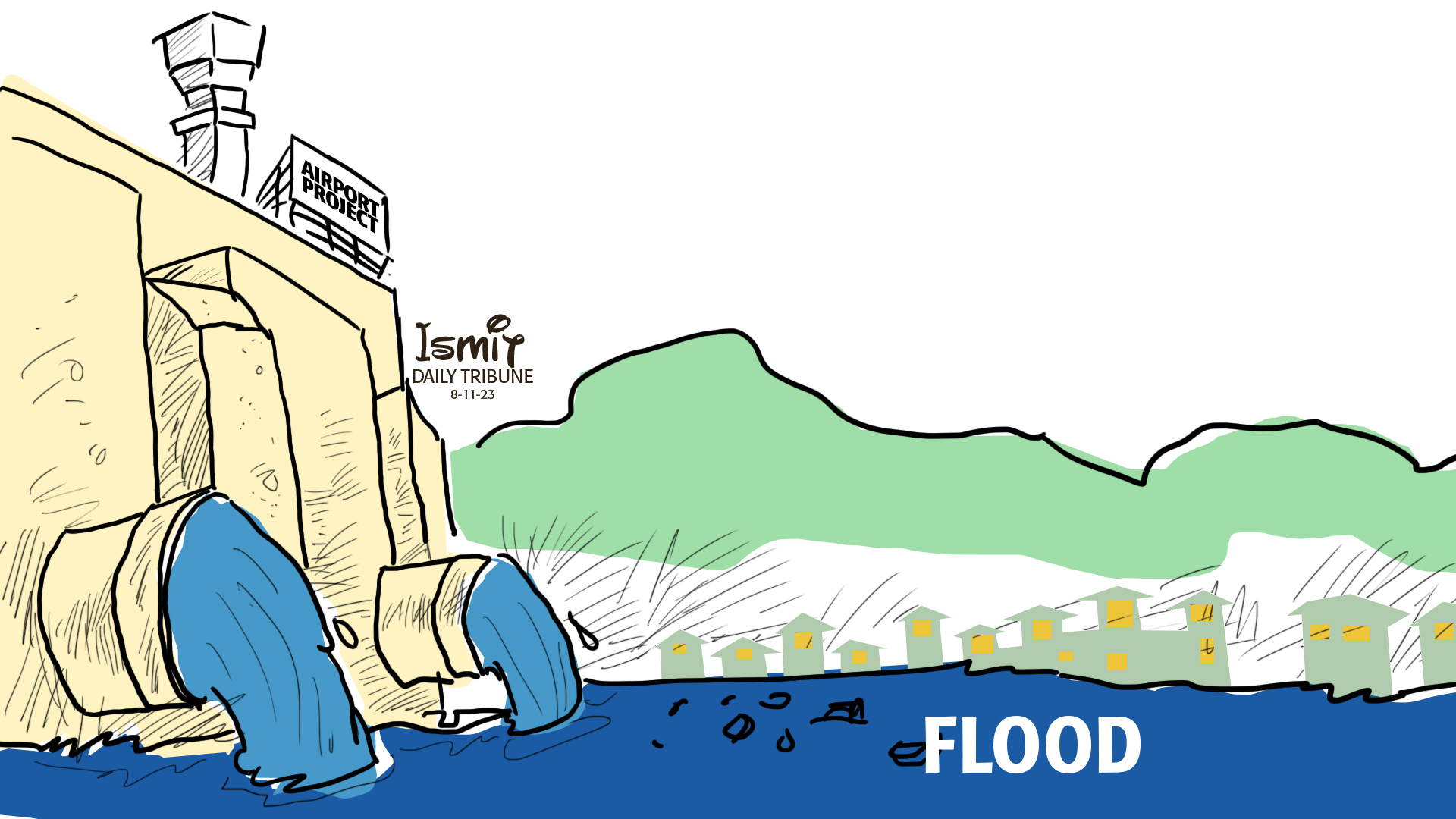San Miguel Corp. should be given credit for its effort to address the allegations of its landmark $15-billion airport project in Bulacan being the cause of serious flooding the past few days.
In contrast, the Asian conglomerate, up to now, has sidestepped the calls for it to account for the Mindoro oil spill since it was the owner of the spilled fuel cargo.
SMC president Ramon S. Ang has flatly denied the SMC megaproject had contributed to the flooding, which was the subject of Daily Tribune’s editorial “Bulacan water world” last 8 July.
There were testimonies quoted in the opinion piece about water passageways impeded by the project.
While Ang said correctly that flooding has been a festering problem in central Luzon for ages, it had not been as bad as the recent inundation that prompted the placing of the provinces under a state of calamity.
Several areas of Bulacan and Pampanga remained under different levels of submersion until yesterday which should be the precursor of a perennial ordeal the residents of the two provinces face.
Ang, in a statement, said flooding had been a major problem, “long before government approved the airport’s construction.”
“There are many contributing factors to flooding. Bulacan has many low-lying areas. Another is land subsidence caused by over-extraction and the depletion of the groundwater. That is one of the reasons why we invested in putting up the Bulacan Bulk Water System Project some years back — to provide potable water to residents without having to resort to the unsustainable use of groundwater,” Ang said.
Ang added that heavily flooded Calumpit and Hagonoy, which are far from the airport project, were affected by the overflow from the heavily silted Pampanga River, “aggravated by the release of water from some dams.”
Civil society groups, however, have long warned about the impact of the Bulacan project on the environment and communities while they stated the same factors that Ang tried to deflect as being directly attributable to the massive development.
Experts said land subsidence will be aggravated once the airport complex is constructed.
A geologist said the area where the Aerotropolis will be built is a productive nursery and feeding ground because of the rich mangrove ecosystem in the area.
“This project will not only impact fisheries and the remaining wetlands of Manila Bay. The viability of its location is also questionable because of the hazards such as the sinking of the project area and bird strikes,” according to a statement of groups seeking a review of the project.
The groups, in their position paper, urged the Senate to investigate the land classification of Barangays Bambang and Taliptip, the site of the airport complex.
They pointed out the two villages are tidal flats and, historically, a mangrove forest which makes them public lands.
Public lands are for conservation and not for developments such as the airport project.
Placing real estate under public conservation is not something subjective since there is usually a great ecological need for it.
The Verde Island Passage is a protected area because it is a rich biodiversity spot, known to experts as the “center of marine shore fish biodiversity.” It is home to the highest concentration of coastal fishes, corals, crustaceans, mollusks, seagrasses, and mangroves.
Thus, placing an imposing structure on the Bulacan wetlands is no different from the destructive Chinese reclamation on Scarborough Shoal.
The Bulacan Aerotropolis’ effects on the environment could even be worse considering it will mean the loss of a source of livelihood for residents of the place.
